The picture of the people’s daily life and rustic life is faithfully reproduced at the Dong Que museum in Nam Dinh.
Located in the middle of a peaceful and simple village in Hanoi, Dong Que Museum is becoming an attractive eco-tourism destination that attracts many visitors on weekends. The campus in the museum is built quite close, simple associated with the life of Vietnamese farmers from: rice fields, straw roofs, rice pestles or ancient sets of tables and chairs.. All of them are preserved and reproduced in the most honest way to give viewers a better understanding of the typical cultural beauty of the Northern countryside.
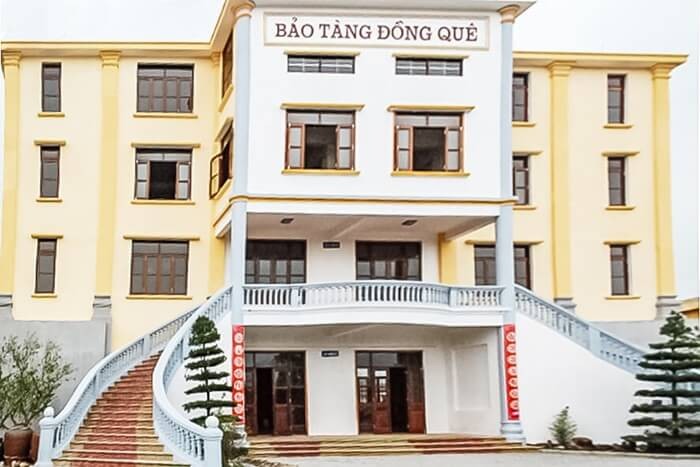 Nam Dinh Country Museum
Nam Dinh Country Museum
The process of establishing Dong Que museum in Giao Thuy
Address: Binh Di Hamlet, Giao Thuy Commune, Giao Thuy District, Nam Dinh Province
The owners of Dong Que Giao Thuy museum are retired teacher Ngo Thi Khieu and her husband Hoang Kien – major general, hero of the people’s armed forces. The story begins with a time when Miss Khieu witnessed some junkies buying copper trays and copper pots and smashing them. Unfortunately, ancient artifacts were associated with the life of ancient farmers and are also a beautiful memory from the time of grandparents. Ms. Khieu spent all her savings to buy those items. Since then, her passion for and collecting antiques from the countryside has grown in her.
In 2010, she and her husband were invited to attend the inauguration of a kindergarten in Giao Thuy. Seeing that the school facilities here were still difficult and lacking, she and her husband had the idea of opening a small library to be a place to play for the little ones. And since then, Ms. Khieu immediately thought of displaying the country artifacts that she had collected before.
When presenting the idea to commune leaders as well as local authorities, Ms. Khieu and her husband did not expect such enthusiastic support from the government. The commune government has leased her and her husband 6,000m2 of land at a very favorable price for 30 years to complete and build the museum.
In 2011, the work was started, in 2012, the work came into operation; In 2015, the entire museum was completed all items.
During the construction of the country museum, teacher Khieu took great pains to learn and collect relevant documents on folk history as well as consult in advance with local historians… And most of all, the museum received the overwhelming support of many Manh Thuong Quan because of its humanistic meaning. At first, quite a few people were shy and reserved because of doubt. But when seeing the museum in action, everyone agreed to join hands, collect and donate a few items to display in the museum.
Now, Dong Que Museum is displaying many diverse and rich artifacts to help visitors find back the old memories of the Northern countryside.
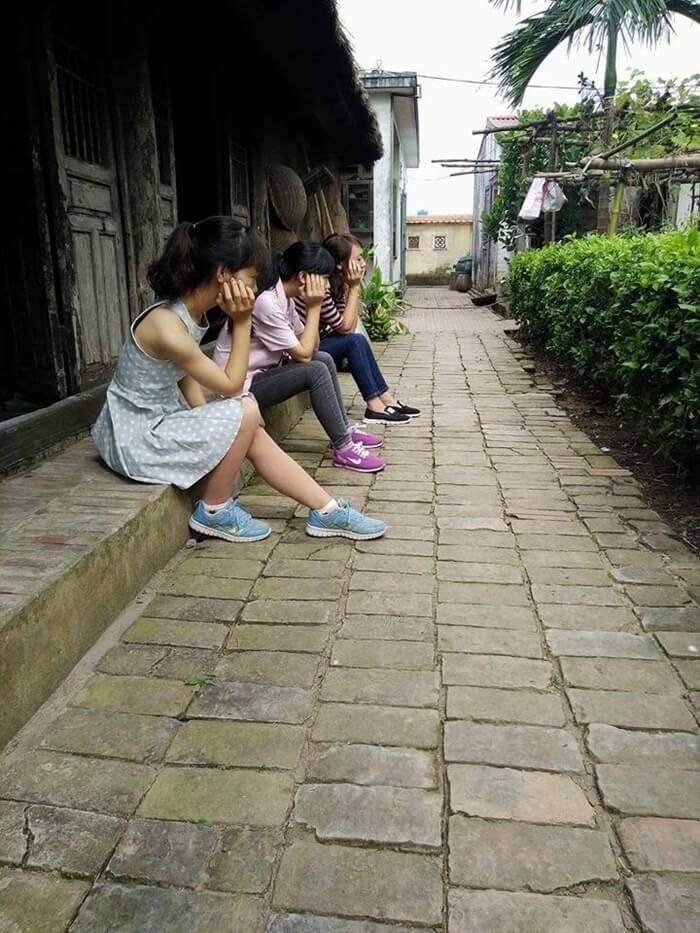 House with thatched roof
House with thatched roof
What’s interesting about visiting a country museum?
Located on a land area of up to 6,000m2, Nam Dinh Dong Que Museum is displayed with 3 main contents: outdoor exhibition area; indoor display area; rural culinary culture.
Outdoor exhibition area
Building 1 is an area that recreates idyllic and close housing models associated with rural life in the northern countryside. The models of thatched houses with earthen walls are roofed with rice straw from the old co-construction. The land report is from the 30s and 50s of the last century. At the same time, it is also a place to display working tools such as harrows, hoes, plows, mills, ash stoves, rice mills, spades…
The second house is a middle-farm house with a sedge-roofed wall. This is the area for weaving mats and recreating the daily life of middle-class farmers.
 Farmer’s house
Farmer’s house
Next to the 3rd house is the landlord’s house with tile and ironwood houses on display of items and daily life items of the landlord’s family: stone mill, rice mill in the past, wine jar, water container. .
 Landlord’s house
Landlord’s house
The last house is a wall house from the 60s planted with many trees such as figs, areca trees…
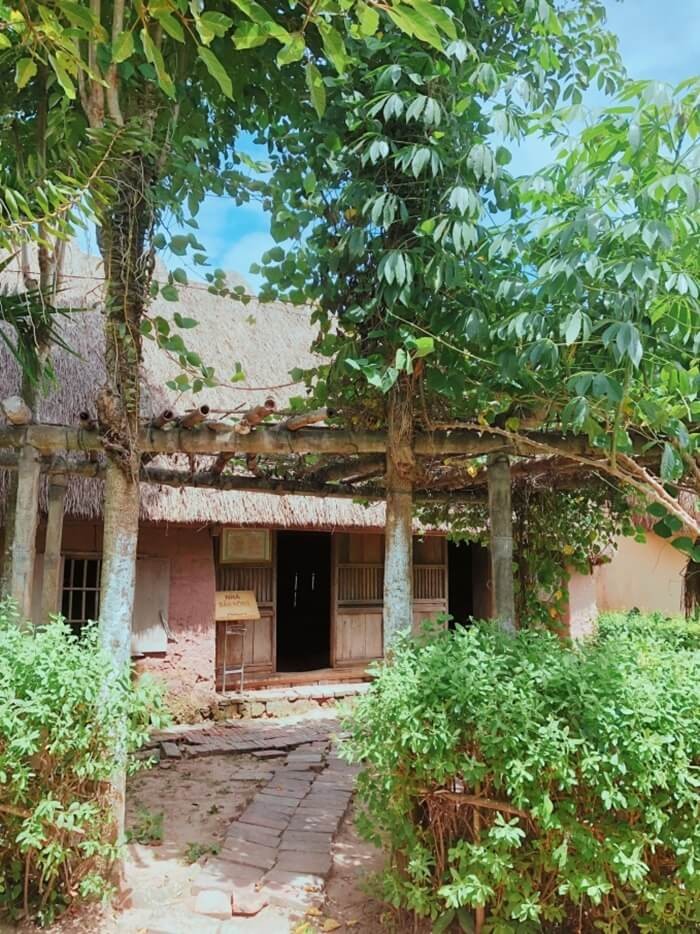 Poor farmer’s house
Poor farmer’s house
The exhibition space outside the museum is covered with the cool green color of many trees such as: cassava, vegetarian tree, fig tree, gardenia… These are all plants bearing the style of Vietnamese villages. Male. Adding the gourds, vegetable stalls, gourd trees… is an interesting highlight to recreate the simple, close-knit daily life of the rural people at that time.
In addition, Dong Que Museum also designed more fish ponds, towed hooves, rice fields… to create a picture of a rustic, everyday life.
Indoor display area
With an indoor display area, a tall 4-storey building is built in the center of the museum.
At the first floor area, there are exhibits not much related to the countryside. This exhibition area mainly introduces visitors to the battlefield memorabilia of Major General Hoang Kien as well as precious documents of the Vietnam People’s Army.
In the middle of the first floor is a place to worship Uncle Ho with a bronze statue of Uncle Ho. The artifacts here are arranged independently of each other and divided into many different themes. The most unique is the place to keep photos of the construction process of Truong Sa archipelago of Nam Dinh children.
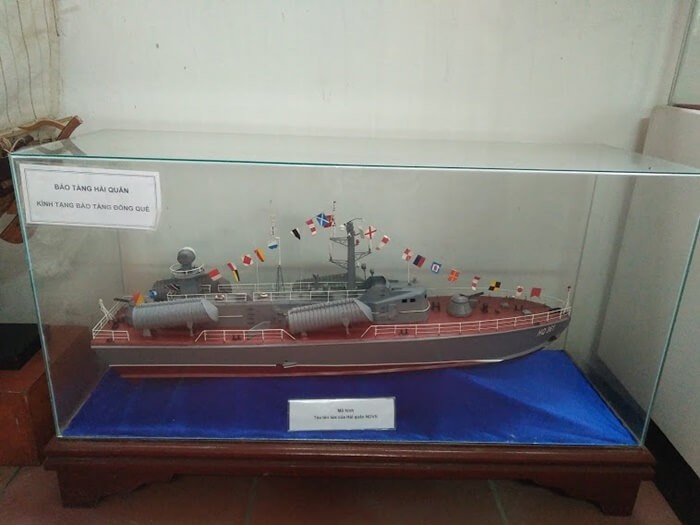 1st floor exhibition area
1st floor exhibition area
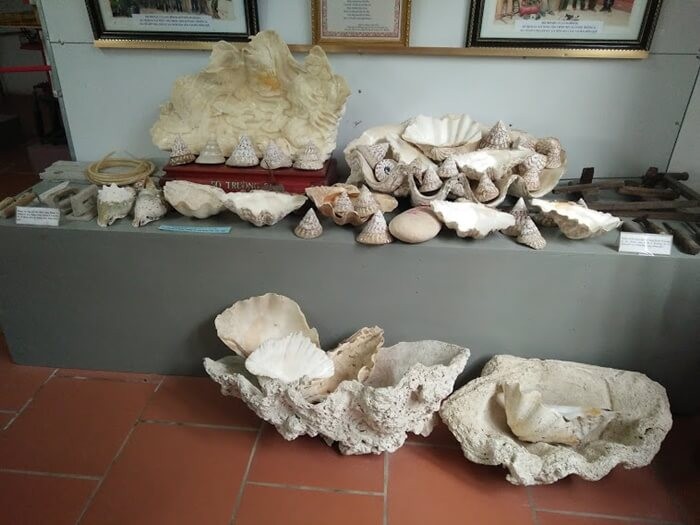 Collection of shells and shells
Collection of shells and shellsAt the 2nd and 3rd floor areas is a display area related to thousands of artifacts of the Northern countryside: tools for agricultural production, salt production, sea craft… of which the 2nd floor is the exhibition area. Main display of the country museum. The tools are mainly related to rice farming and daily life of the people in the North of Vietnam, such as pots, trays, bronze pots, oil lamps, coins, and Indochinese banknotes…
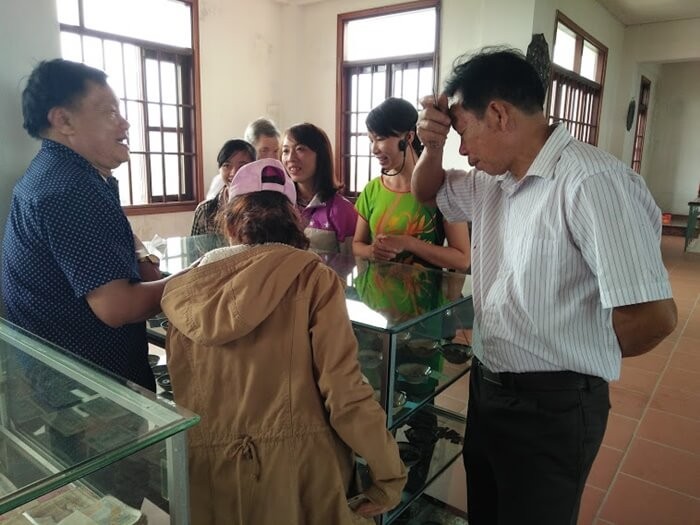 2nd floor exhibition area
2nd floor exhibition area
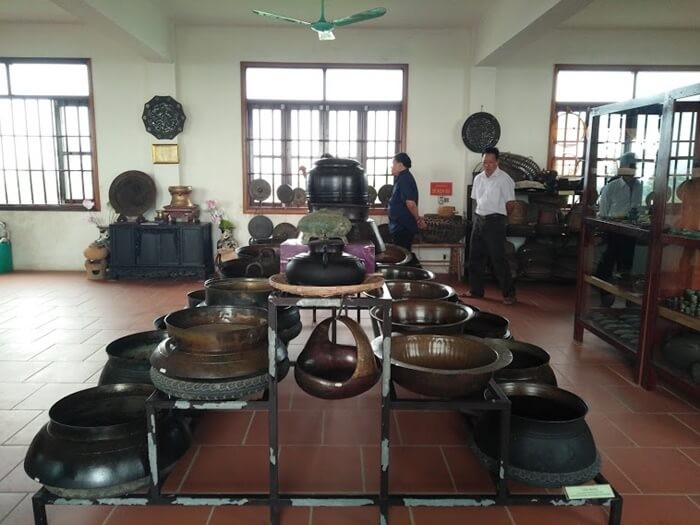 Bronze display area
Bronze display area
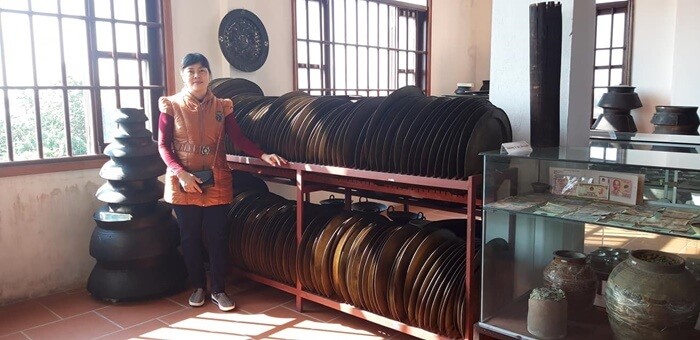 Bronze tray display area
Bronze tray display area
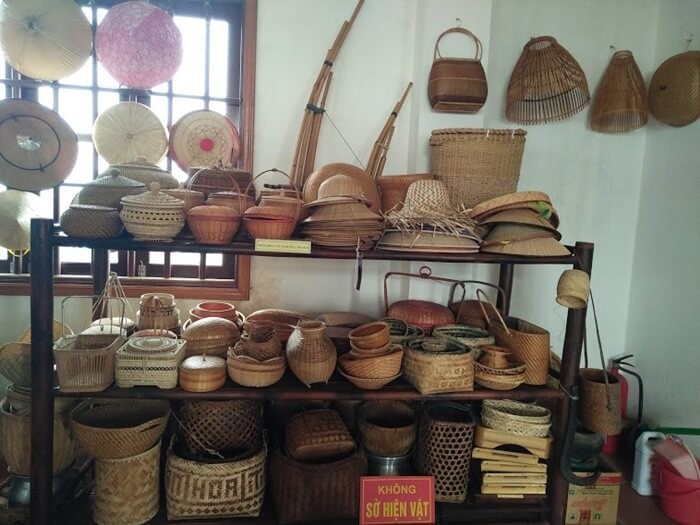 Crafts area, knitting
Crafts area, knitting
 Coin Collection
Coin Collection
The 4th floor is a small mini library equipped with more than 1,000 books in many different fields since 1945 that many other libraries do not have. And this is also the place to use cultural space for local people.
Country food court
In addition to the peaceful space of the northern countryside, Dong Que Giao Thuy museum also has a very interesting country food area for visitors to enjoy rural dishes and drinks such as: dong vermicelli, sticky rice, etc. Gai cake, making soy sauce… Especially, for the little ones who come to visit Dong Que museum, they will be able to make their own floating cakes, gai cakes… Or experience a real gardener such as: grow vegetables, catch fish, grind rice and pound rice.
Most especially, the museum also grows a variety of vegetables, raises fish, raises pigs, and raises pigs to provide a source of clean food, and prepares rustic dishes to serve visitors. Thereby, guests will understand and appreciate more clean agricultural products made from the sweat and efforts of farmers.
As one of the privately-established Dong Que cultural museums , coming here in addition to visiting and admiring the ancient artifacts, you will also better understand the unique customs, lifestyle, and culture of Dong Que culture. the Northern Plains past and present. Since then, educating the young generation must love their roots and homeland and be proud of the traditional cultural values that our ancestors left and built.
Source: Collected internet.